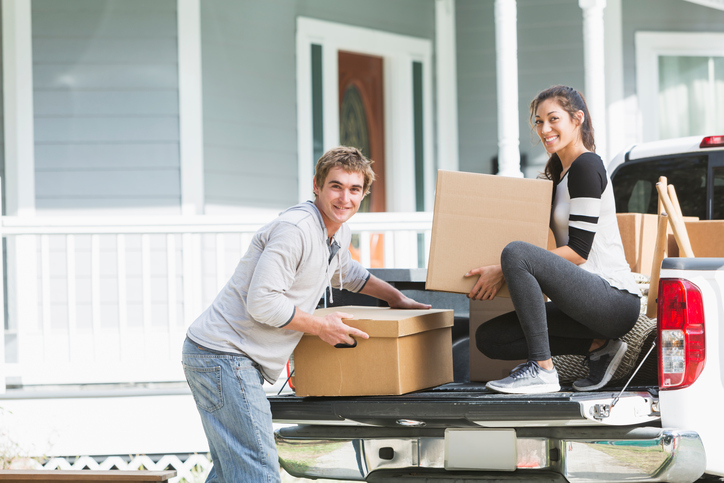Moving to a new home is both stressful and exciting. You’re getting the opportunity for a fresh start but will have to plan one (or more) of the busiest days of your life.
The average American moves twelve times in their lifetime. Last year alone, 43 million Americans went on this adventure. Given the stress level involved, you may not even want to think about adding an additional layer to it.
At the same time, you might not know that your move also presents a significant opportunity to help the planet. In fact, if you “planet” just right, you have the chance to make this activity more sustainable, and easier on your conscience. As it turns out, a wide range of easy changes can make your move greener:
- Understanding what you actually have to take with you.
- How to find the right packing materials.
- Strategically selecting your helpers.
- Staging your current home with sustainability in mind.
- Ensuring a sustainable renovation, if needed.
So let’s jump right in! The 5 tips can help you accomplish a more sustainable move.
1) Purge and Donate
First things first: not everything in your current home actually has to make the move with you. Strategic purging allows you to sort out the items you haven’t seen in years. That, in turn, reduces the weight you have to take with you as you make the move to your new home.
Of course, the benefits of purging items that are no longer needed also go further. Rather than throwing them away, you have a prime opportunity to donate them to those in need. The mere fact that you no longer wear an entire section of your wardrobe doesn’t mean others wouldn’t appreciate it.
By donating intact belongings you no longer need, you are actively recycling them. Each item used by someone else is one less time that needs to be produced, eliminating all of the environmental impacts that come with that production.
2) Recycle Packing and Boxes
Speaking of recycling: many of your belongings will need to fit in boxes for a safe trip. But do you really have to buy new, unused boxes to get enough space? Not necessarily. Consider these alternatives:
- Ask your family and friends for any old, unused boxes they might no longer need.
- Ask your co-workers and other departments at work for old boxes. Especially paper and office supply boxes make for ideal moving aides.
- Ask a local supermarket for boxes. Every item has to be unboxed before going on the shelf, and these boxes are typically thrown away otherwise.
Of course, moving boxes are not your only opportunity to go green while packing up your belongings. Rather than buying bubble wrap, consider using old newspapers to protect breakables. You can also use your clothes for the same purpose.
3) Find the Right Moving Company
Depending on where you live, you might be able to find a moving company that specializes in green moving practices. These companies tend to offer benefits that range from trucks using biodiesel to the opportunity to sell back your moving boxes once you’re finished.
Even companies that don’t explicitly advertise their sustainable efforts allow you to be strategic. Old trucks, for example, tend to be less fuel-efficient than newer models.
If you don’t hire a moving company and simply rely on your friends and family, consider renting a single, large truck for all of your belongings. Now, you can simply ask every helper to meet you at your new home to reduce the number of trips taken.
4) Go Easy on the Staging
Back to your old home for a second. Chances are that even as you plan your move to a new home, you are still looking to sell your old one. In that case, you are likely to be invested in presenting your old home as favorably as possible.
However, it’s important that you don’t get carried away in that process in order to stay sustainable. Avoid buying items specifically to make your home look good, as they will likely be thrown out before serving an actual purpose. Similarly, perishables on your counters can result in more waste if your home doesn’t immediately sell.
Instead, get creative. Reuse old items in a new situation. Keep it minimalistic, which will actually improve the perception of space for potential buyers.
5) Ensure a Sustainable Renovation
The final item intrinsically connected to moving is preparing your new home for your new life. In most cases, you will not be able to find a house that’s exactly how you imagined, so you might engage in some renovations before actually moving in.
These renovations can be light or heavy. You should always, however, keep sustainability in mind.
That means choosing finishing materials, such as bamboo flooring, that are less harmful to the environment than their alternatives. It also means understanding exactly how to to make for a greener moving process. Every step you take, from planning the renovation to cleaning up after the fact, should be made with sustainability in mind.
Moving into a new home is undeniably stressful. At the same time, it doesn’t have to harm the environment as well. Using the above 5 tips, you can plan the process to make sure that from listing your old home to the day of the move, every decision you make ensures a greener process. The result will not just be sustainability, but peace of mind on your end.

About the Author
Jen is your go-to guru for crafting a cozy, green cocoon. 🪴 Her dive into sustainable building wasn’t just about saving the planet—it started as a mission to make family movie nights eco-friendly (and to ensure the popcorn was the only thing getting heated!). With a knack for breaking down the jargon, Jen turns eco-lingo into everyday language. Swing by the Green Living blog for a mix of earth-loving advice and home improvement hacks. Whether you’re just dipping your toes into green waters or you’ve been swimming in the deep end of DIY projects, Jen’s here to guide, giggle, and remind you that every eco-choice is a step towards a planet that thanks you… and maybe even sends a rainbow your way! 🌈


